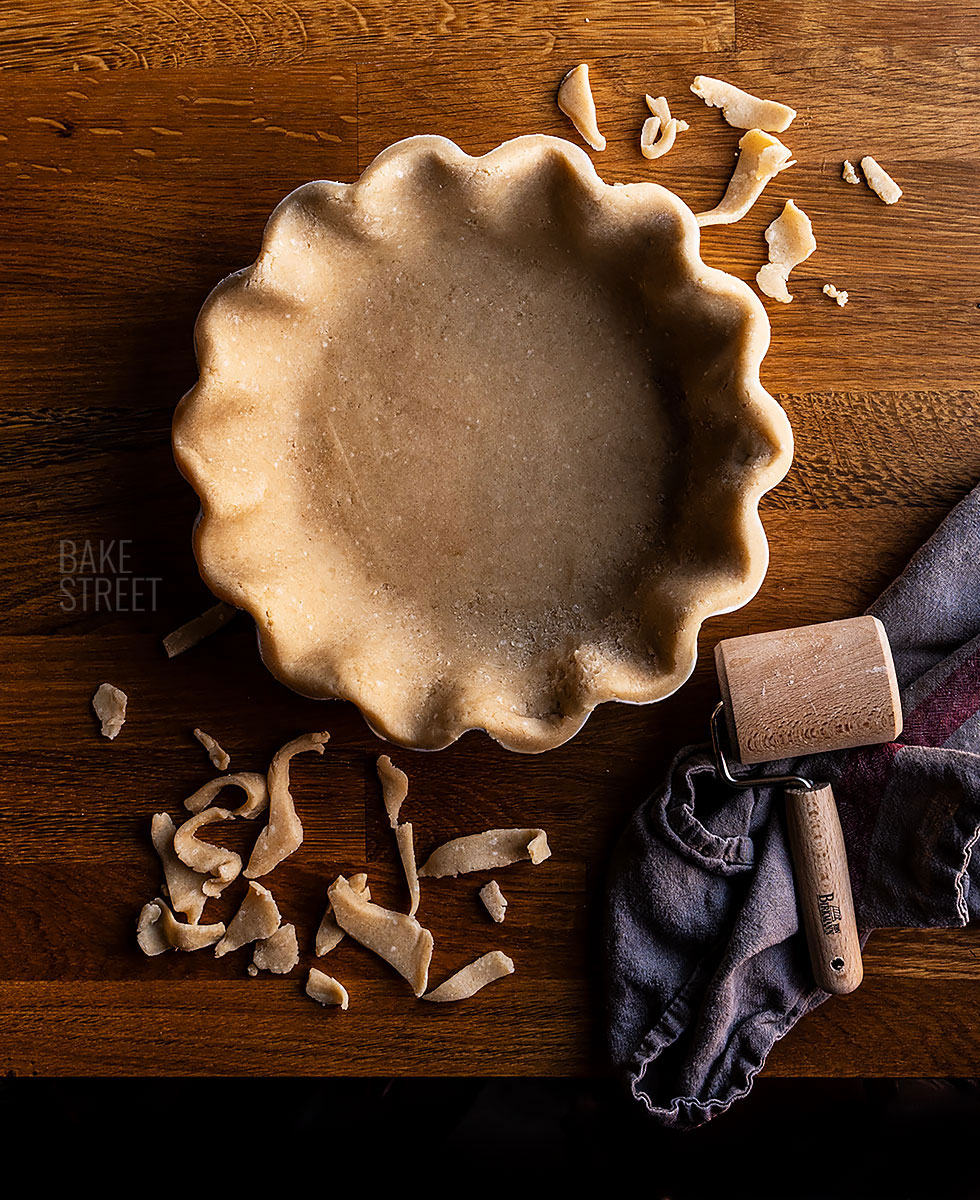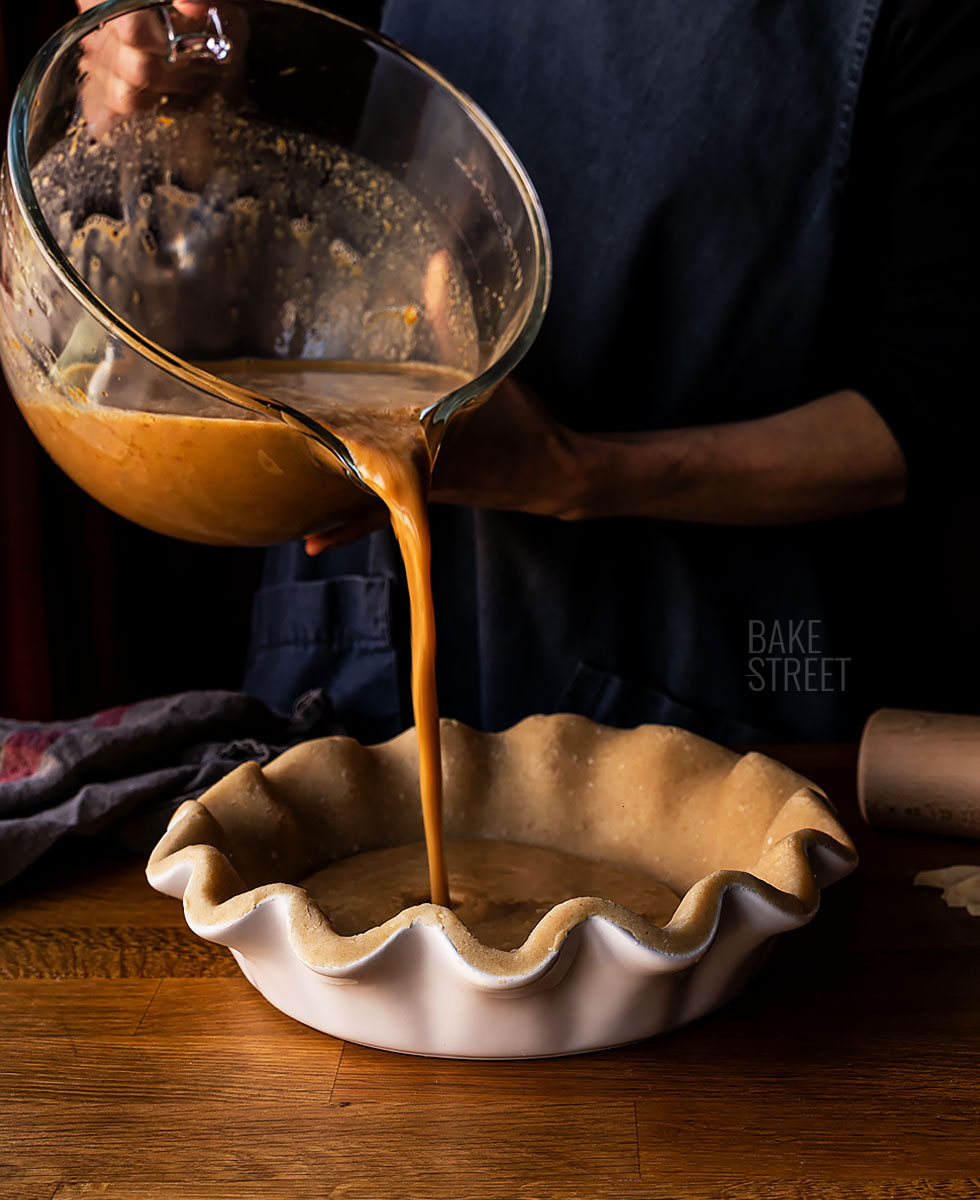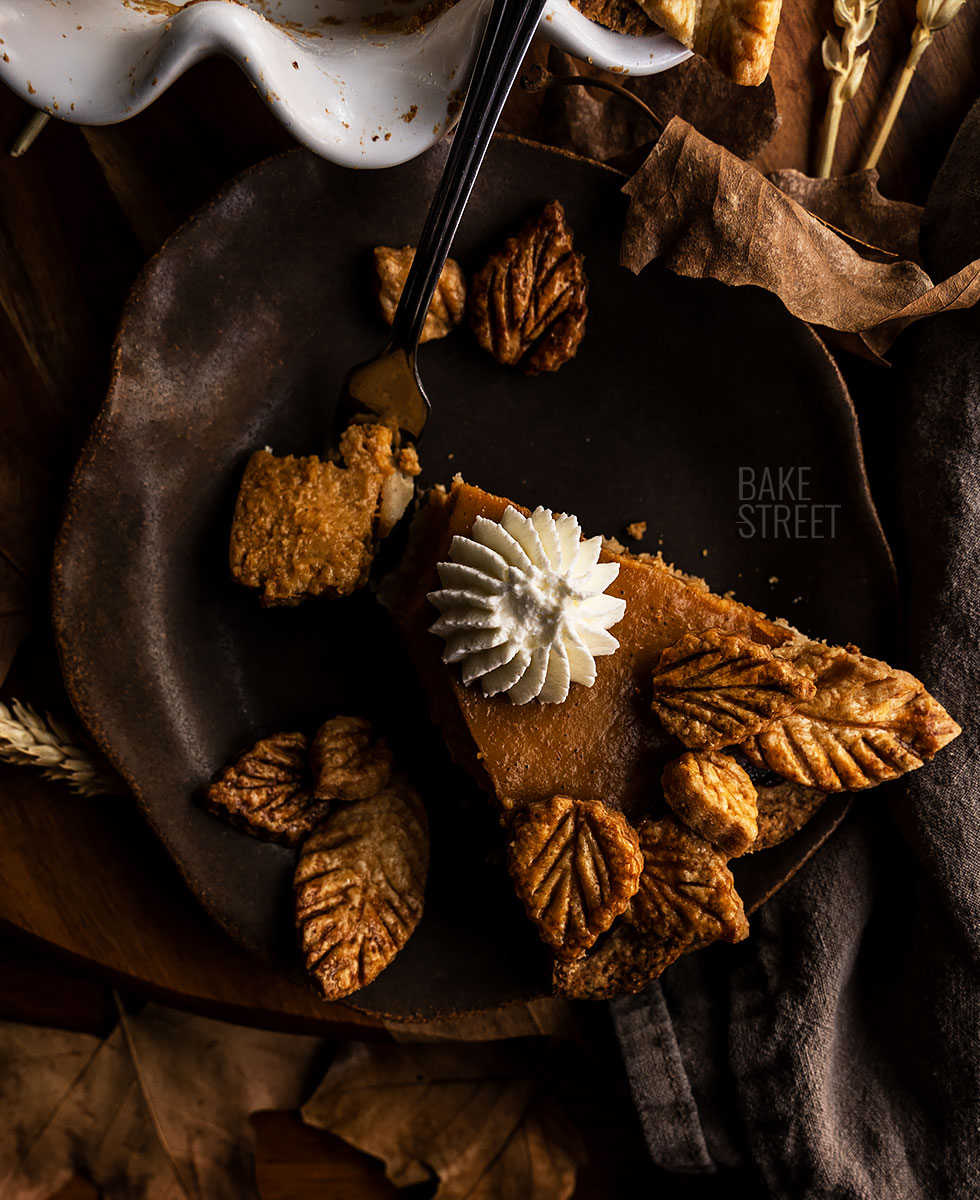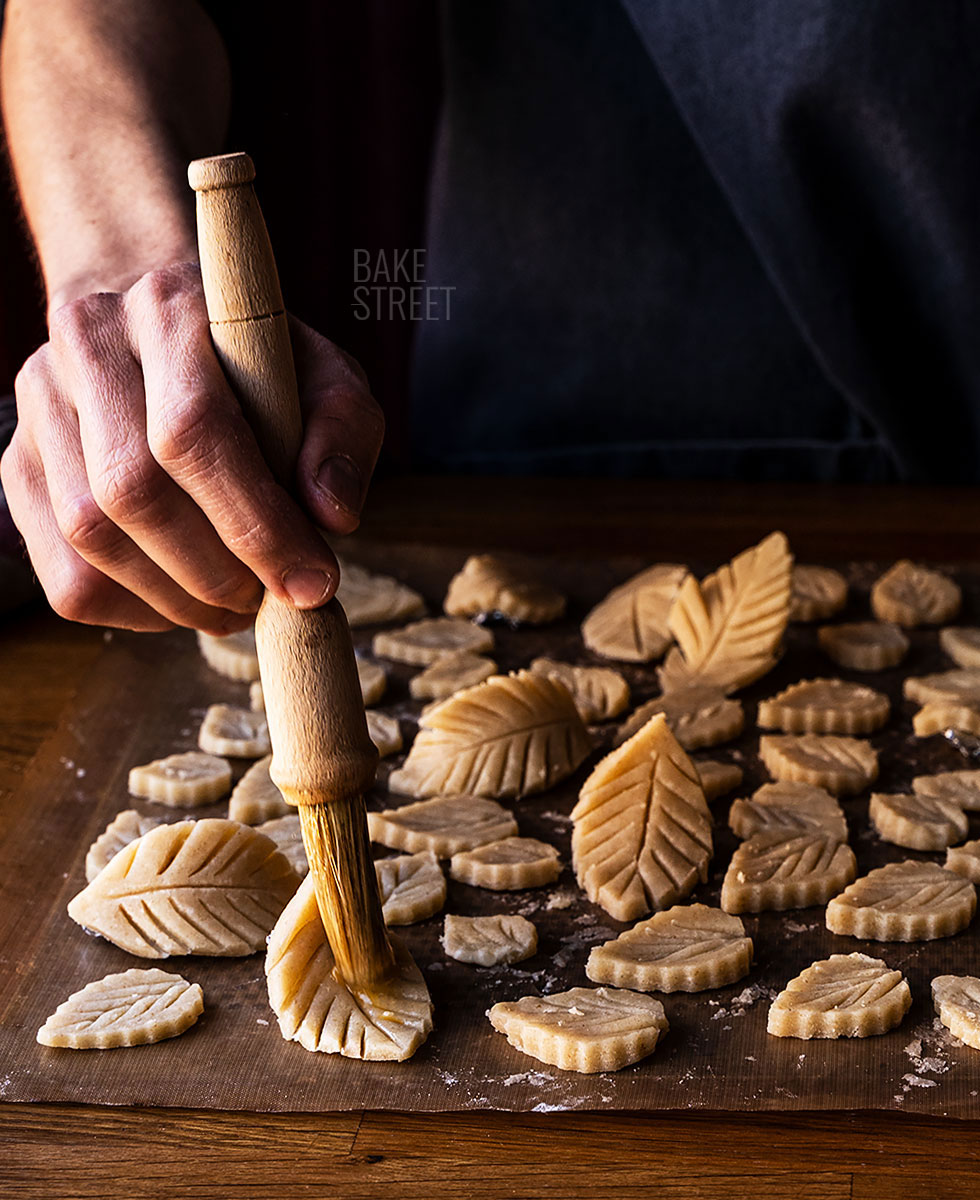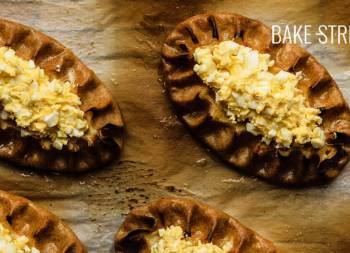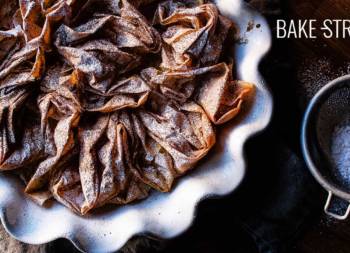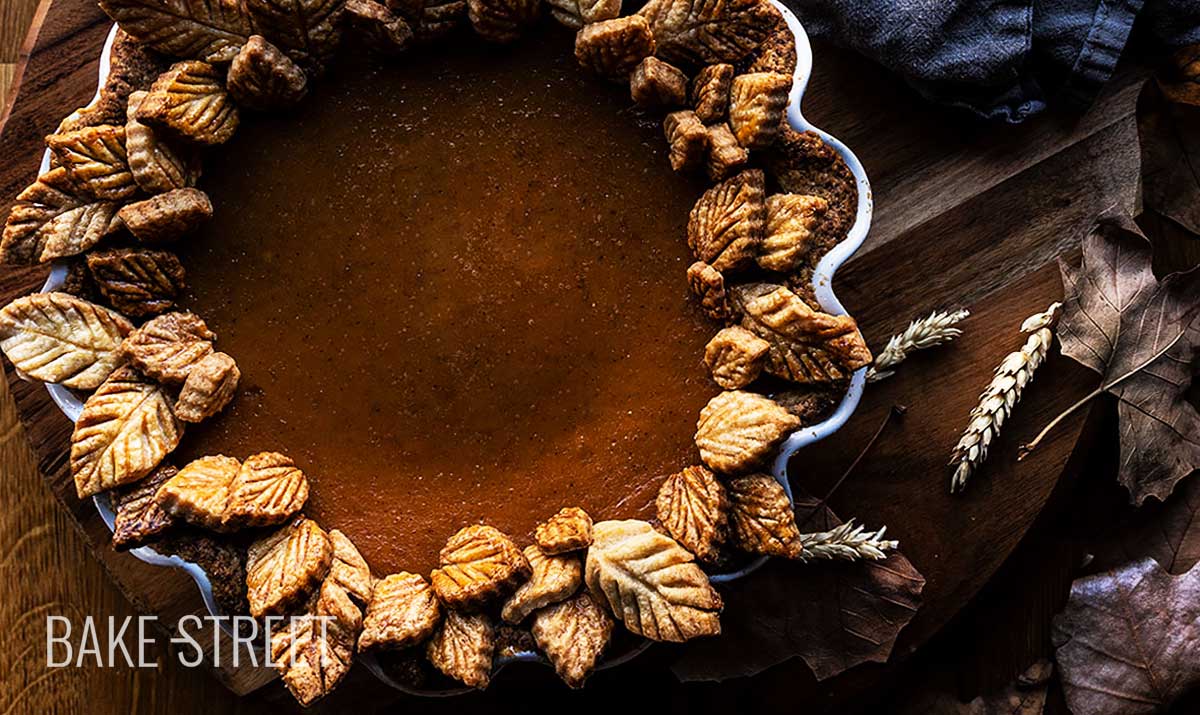
Pumpkin Pie
I’m sure it’s the same for you. It is autumn coming and entering a wonderful cycle of well-being and happiness. I think it’s the magic of this season. The wide range of colors that leave us the trees, the ideal temperature to take long walks, the wonderful seasonal products that we can enjoy (this I enjoy to the fullest), the wonderful festivities that are celebrated in these days … But above all the seasonal products. They drive me crazy.
There are many traditional autumn products, but pumpkins, I love them. They fascinate me. That’s why this year I had to start the season with one of my favorite cakes, Pumpkin pie.
It’s not the first time I’ve made it at home, in fact it’s a recipe I’ve made many times, but for some strange reason I never make the same one. I keep changing doughs for the base, ingredients for the filling… And I can assure you that this one that I leave you today is the best pumpkin pie that I have ever made in my life.
Not only for the taste, but also for the textures. The base is slightly buttery, flaky and crunchy. The filling is very mellow, moist, delicately sweet, full of spice aromas and with the ideal consistency to stay firm. If we serve it with a little whipped cream… Then I no longer have words to describe the sensation. I assure you.

Pumkin Pie origin.
This cake made with pumpkin puree, spices and a delicate and crunchy base, is a symbol of American gastronomy and its wonderful holiday “Thanksgiving“. I would like to say that this year I am looking forward to celebrating it and I may well do something about it at home. I’ve been wanting to do it for years and I think it’s time to do it.
Pumpkins were first cultivated in America around 5500 BC. In fact, they were one of the first foods brought by European explorers from the New World. The first mention of orange squashes in Europe dates back to 1536, and a few decades later, they began to be grown regularly in England. There they were called “pumpions“, derived from the word “pumpkin” and in honor of the pompom due to its rounded shape.
Pumpkins soon became part of the English culture and their cakes.
When the pilgrims sailed to America on the “Mayflower” in 1620, many of them were already familiar with the pumpkins as were the Wampanoag, who helped them survive their first year in the Plymouth colony. Despite being very useful in the kitchen, especially for making bread with little flour since this was a “luxury” ingredient, they were not always popular.
In 1654, Captain Edward Johnson of the ship Massachusetts, wrote that as New England prospered, people made pies from apples, pears and quince instead of their old pumpkin pies.
These pumpkin pies were made in many ways, but some processes may not be familiar to us today.
A 1653 French cookbook taught how to make them by boiling the pumpkin in milk, then straining it and placing it on a cake base.
“Gentlewoman’s Companion” by the English writer Hannah Woolley from 1670 advocated a cake made with alternate layers of pumpkin and apple, seasoned with rosemary, sweet marjoram and a handful of thyme. Other times, making a base or crust for the cake was unnecessary. One of the first recipes from New England was to fill a hollowed out pumpkin with sweetened and spiced milk and cook it directly on the fire (an English version of the same preparation had the pumpkin filled with sliced apples).
By the early 18th century, pumpkin pie had earned a place at the table, as “Thanksgiving Day” became a major New England regional holiday. In 1705 the town of Colchester, Connecticut, postponed “Thanksgiving Day” for a week because there wasn’t enough molasses to make pumpkin pie.
The pioneer Amelia Simmons in her book “American Cookery” of 1796 contained a couple of recipes to prepare pumpkin pie, one of them was similar to the version we know today.
It wasn’t until the mid-19th century that pumpkin pie became politically important in the United States.
Many of the staunchest abolitionists were from New England, and their favorite dessert was mentioned in novels, poems, and newspapers. Sarah Josepha Hale, an abolitionist who worked for decades to make “Thanksgiving Day” a national holiday, introduced this cake in her 1827 anti-slavery novel “Northwood. In it she described a “Thanksgiving” table filled with desserts of all names and descriptions: “The pumpkin pie, however, occupied the most distinguished niche.
In 1842 another abolitionist, Lydia Maria Child, wrote her famous poem about a “New England Thanksgiving Day” that began; “Over the river and through the woods” and ended with a cry, “Hooray for pumpkin pie!
Not surprisingly, when Abraham Lincoln made Thanksgiving a national holiday in 1863, Confederate observers saw it as a move to impose U.S. traditions on the South.
An editorialist in Richmond, Virginia, offered a sarcastic explanation of U.S. Thanksgiving Day:
“This is an annual custom of that people, until now celebrated with devout oblations to themselves with pumpkin pie and roast turkey”.
After the Civil War, “Thanksgiving”, and with it, pumpkin pie, extended its national reach reinforced by writings in women’s magazines.
In 1929, the Chicago Canned Meat Company introduced a line of canned pumpkin puree that soon became a must-have accessory for Thanksgiving, replacing the need to grill and strain the pumpkin itself.
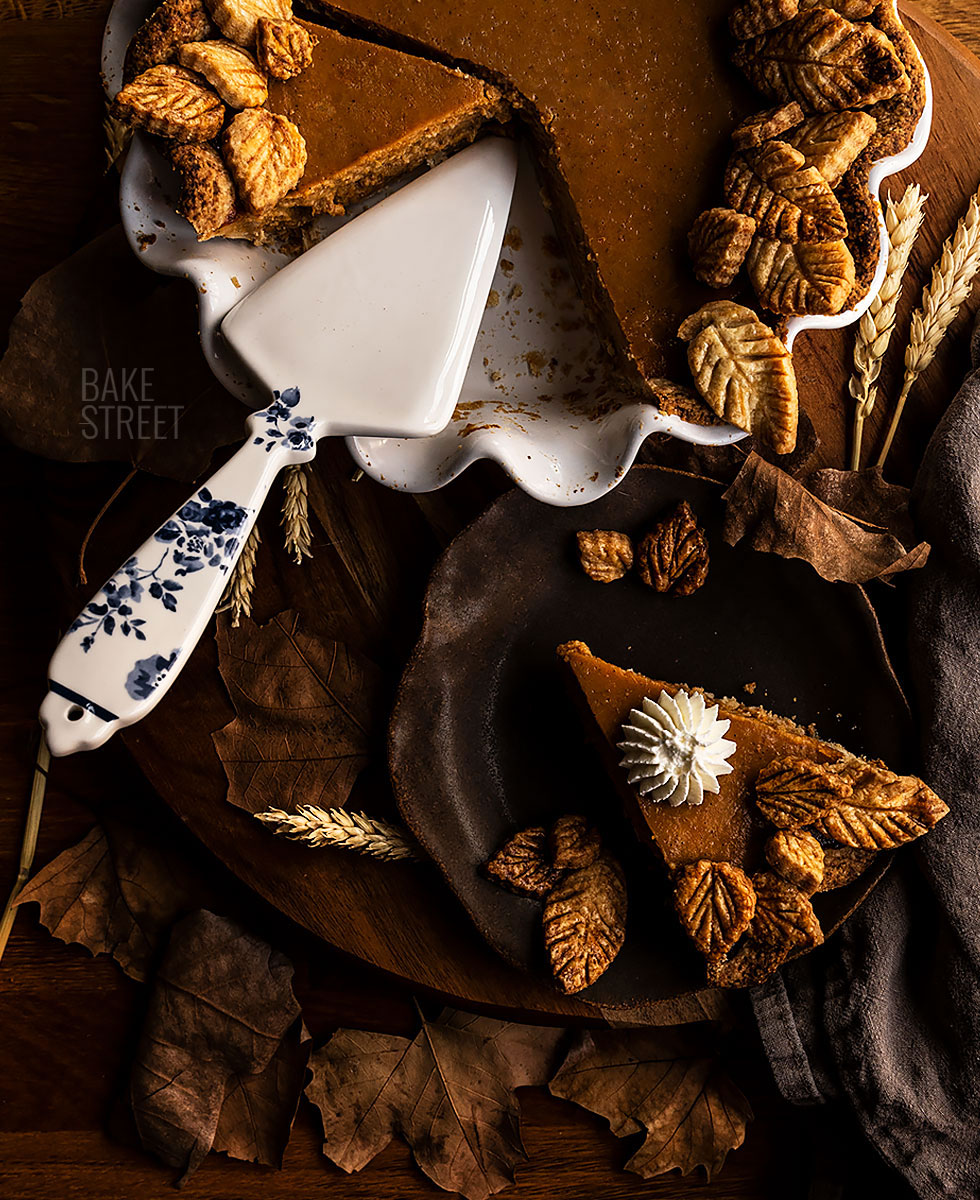
Pumpkin Pie recipe
Ingredients for a 26 cm diameter mold (8 serves)
FOR THE DOUGH:
- 435 g plain/AP flour
- 245 g unsalted butter at room temperature
- 40 g lard
- 63 g sugar
- 78 g very cold water, from the fridge
- 1/2 tsp salt
FOR PUMPKIN FILLING:
- 575 g baked pumpkin, clean and without peel
- 50 g dark muscovado sugar
- 160 g sugar
- 3 medium eggs
- 465 g evaporated milk
- 1 tsp, generous, cinnamon powder
- 1 tsp ginger powder
- 1/2 tsp all spice
- 1/4 tsp clove, ground (optional)
Instructions
Make the dough for the Pumpkin Pie.
- Grate the cold butter, set aside.
- In a large bowl (I have used my KitchenAid) add the flour together with the grated butter, lard, sugar and salt, mix with the help of the flat beater until a sandy mixture is obtained. It will be a few seconds, it is important not to work the dough too much so as not to develop the gluten.
- Pour the water and mix again during some seconds. We will obtain a non-homogeneous paste.
- Transfer the dough to a work surface and we will finish working it making the technique of fraisage. It will serve us to obtain a homogenous dough, but without developing the gluten.
- Putt the "heel" of the hand on the dough and slide ahead little by little the dough so that it is amalgamated but without obtaining an elastic result. We will do it few times, just enough to amalgamate the mixture.
- Once it is homogeneous, divide the dough into two parts. One slightly higher than the other (it will be the one we use for the mold).
- Stretch the dough between two Teflon sheets. We will give it a superior diameter to the mold.
- In case the dough has acquired room temperature, refrigerate it for 15-20 minutes so that we can handle it without breaking it.
- Place the dough on the mold (I have used one from Emile Henry) and fit it without pressing the dough. We adjust it perfectly, but without pressing it with our hands.
- Roll the edges with a roller pin, that way we can remove the excess dough so that it is perfectly adjusted.
- Refrigerate while preparing the filling. At this point, if we wish, we can refrigerate the mold with the dough until the next day.
- The other portion of dough is stretched between two Teflon sheets, we can use an adjustable roller to give a thickness of 3 mm, and refrigerate before cutting the sheets. The dough must be very firm to obtain clean cuts.

Make the filling for the Pumpkin Pie.
- In the KitchenAid bowl add the roasted pumpkin in pieces along with the two types of sugar and the spices. Mix with the whisk at speed 1 until a smooth and creamy puree is achieved.
- Add the eggs and mix again at speed 1, doing so only until the eggs are completely integrated.
- Finally, pour evaporated milk and mix again until homogenized.
Fill and bake.
- Pour the filling into the mold. To avoid foam/bubbles on the surface, the ideal is to pour the mixture on a spatula. In case some of it comes out, you can remove it with the help of a spoon.
- I advise you not to fill the mould up to the top outside the oven because it will be very difficult to move the mould without pouring the filling. You can either pour the filling into the oven or finish pouring it into the oven.

- Bake at medium height tot 390ºF/200ºC for 15 minutes.
- After this time, reduce it to 345º F/175ºC and bake for 50-55 minutes more. You will know that the cake is done because when you move the mold it will have a soft wiggling, but you will be able to appreciate that it is curdled.
- Turn off the oven, leave the door half open and let it cool down completely inside. In this way we favor a gradual cooling and do not generate cracks on the surface.
- Remove from the oven and plñace it on a rack.
- At this point we can either consume it, once it has cooled, or refrigerate it until the next day.
Make and bake the leaves.
- Remove the dough that we left stretched and refrigerated.
- With the help of different leaves cutters, cut the dough to create leaves of different sizes and shapes.
- Once they are cut, refrigerate them for 20 minutes.
- Remove from the fridge and create relief on the surface. With the help of a knife, draw textures on the leaves.
- So that they are not all flat, I put balls of aluminum foil under some of them, this will give them movement.
- Refrigerate for 20 minutes.
- Preheat the oven to 345º F/175ºC.
- Lightly brush the leaves with beaten egg and bake at medium height for 14-15 minutes.
- Remove from the oven and let cool completely on a rack.
Decorate Pumpkin Pie.
- Place the leaves around the edge of the mold or you can decorate the pie to your liking.
- Serve. The ideal is to accompany the cake with a bit of whipped cream, we can serve it on the side or we can pipe some on the surface. I leave this to your taste.
- Enjoy :)

Notes
- The dough from the base can be mixed in the KitchenAid or by hand inside a large bowl. As you find it most convenient and clean.
- The lard provides a slightly flaky texture very pleasant to the palate. If you want to omit it, you can substitute it with butter, but I recommend you to use it. It doesn't add flavour, but it does give us an incredible texture.
- When placing the dough in the mold, do not press it, place it and adjust it gently. Otherwise it will shrink after baking.
- The dough can be kept refrigerated, once placed in the mold and covered with film, until the next day.
- In my case I preferred to roast the pumpkin to make the puree, but if you prefer, you can cook it. We need 575 g of pulp already baked.
- To avoid foam/bubbles on the surface when pouring the filling, the ideal is to pour the mixture on a spatula.
- The decoration is completely optional and you can adjust it to your taste.
- It can be served with whipped cream, covered with Italian meringue or regular.
- It can be kept refrigerated for 4-5 days.

If you don't usually make Pumpkin Pie at home or you've never even had the courage to do so, I think this year is your year. I can assure you that not only is it a very easy cake to make, but the result is a cake that really deserves the time and effort that we should put into it.
As for me, this year, as I mentioned above, I am very excited to celebrate Thanksgiving at home. I already have the dessert clear, along with another one that I will leave you soon. Now it's my turn to practice the rest of the menu, we'll see how it goes.
Big hugs,
Eva
Sources: History
